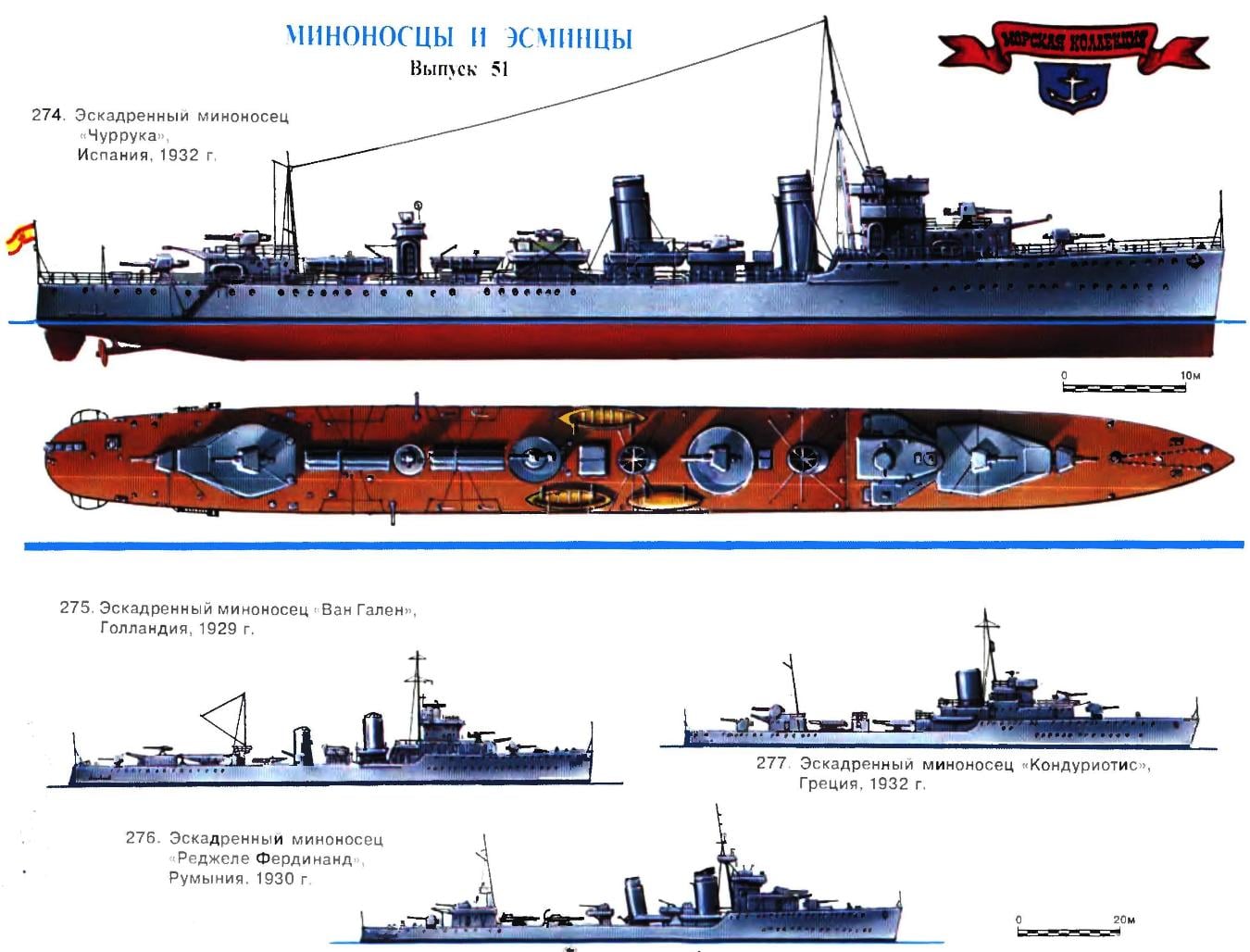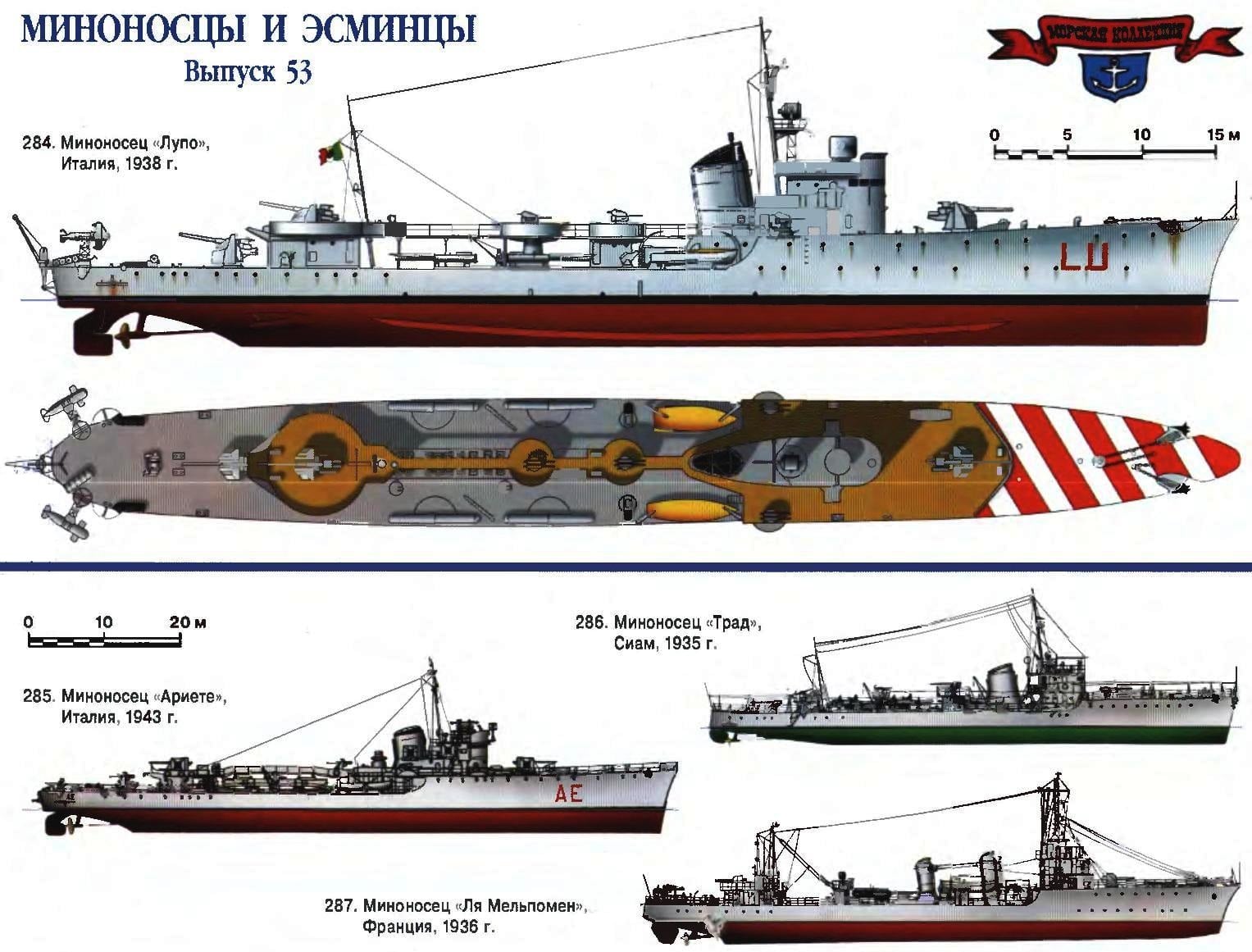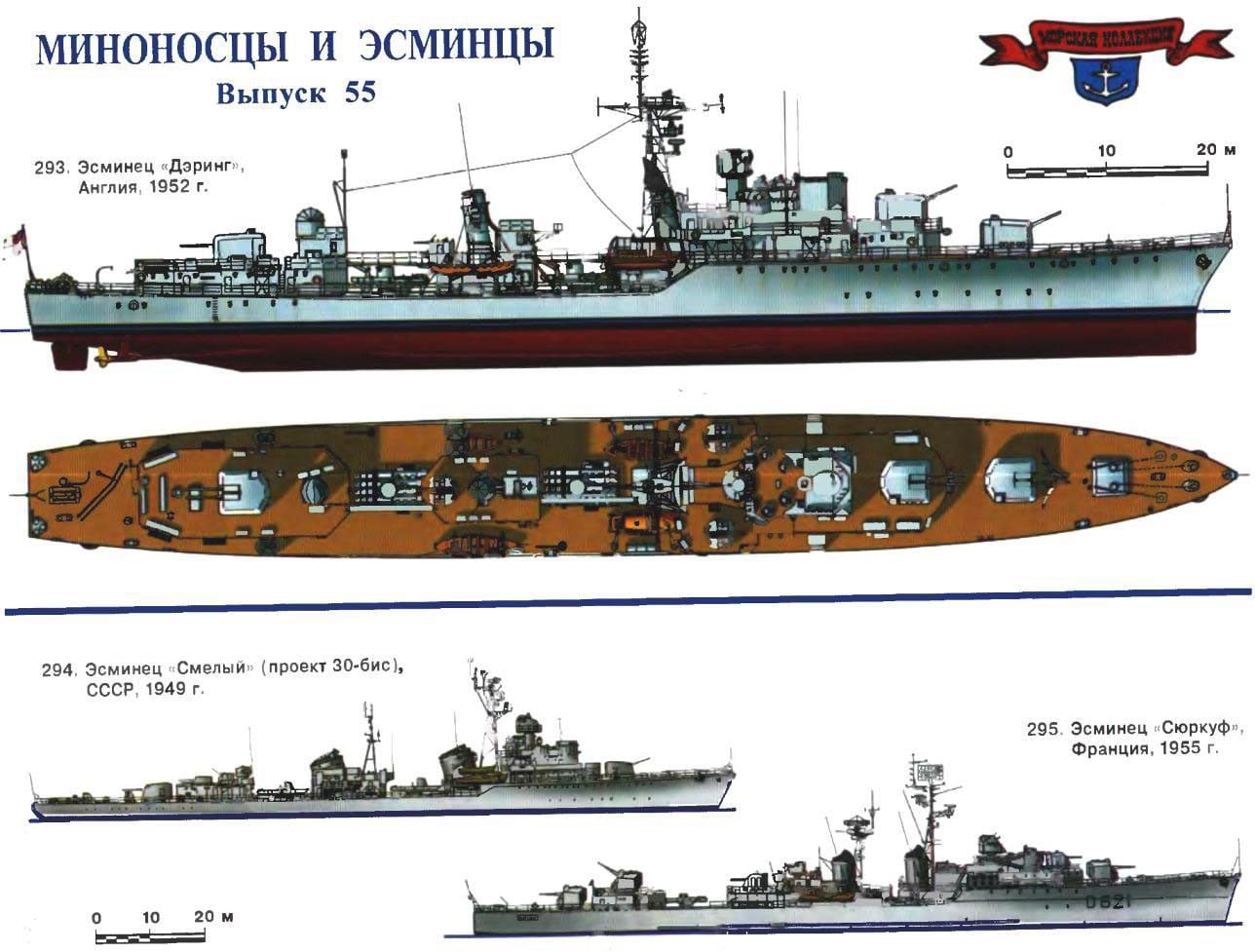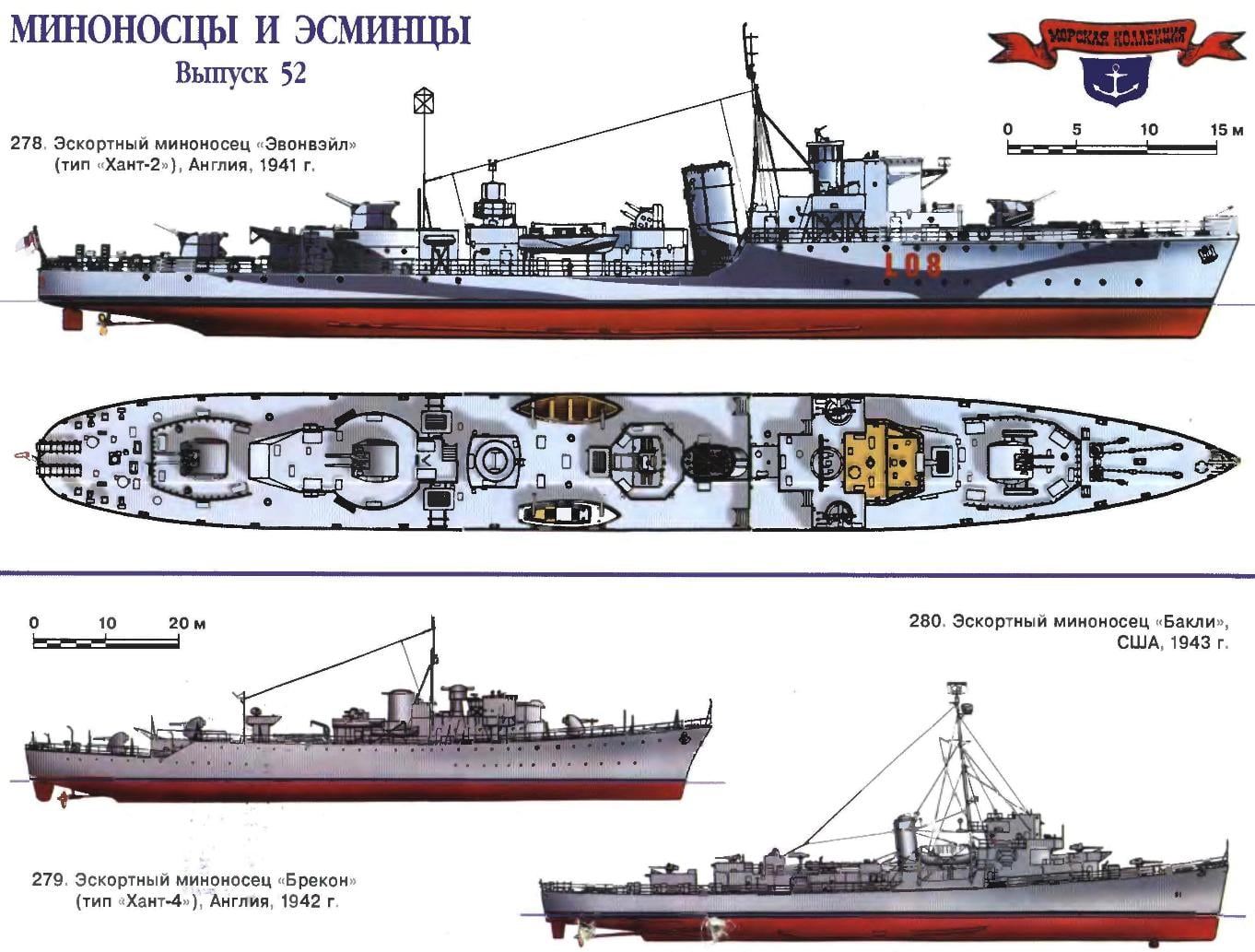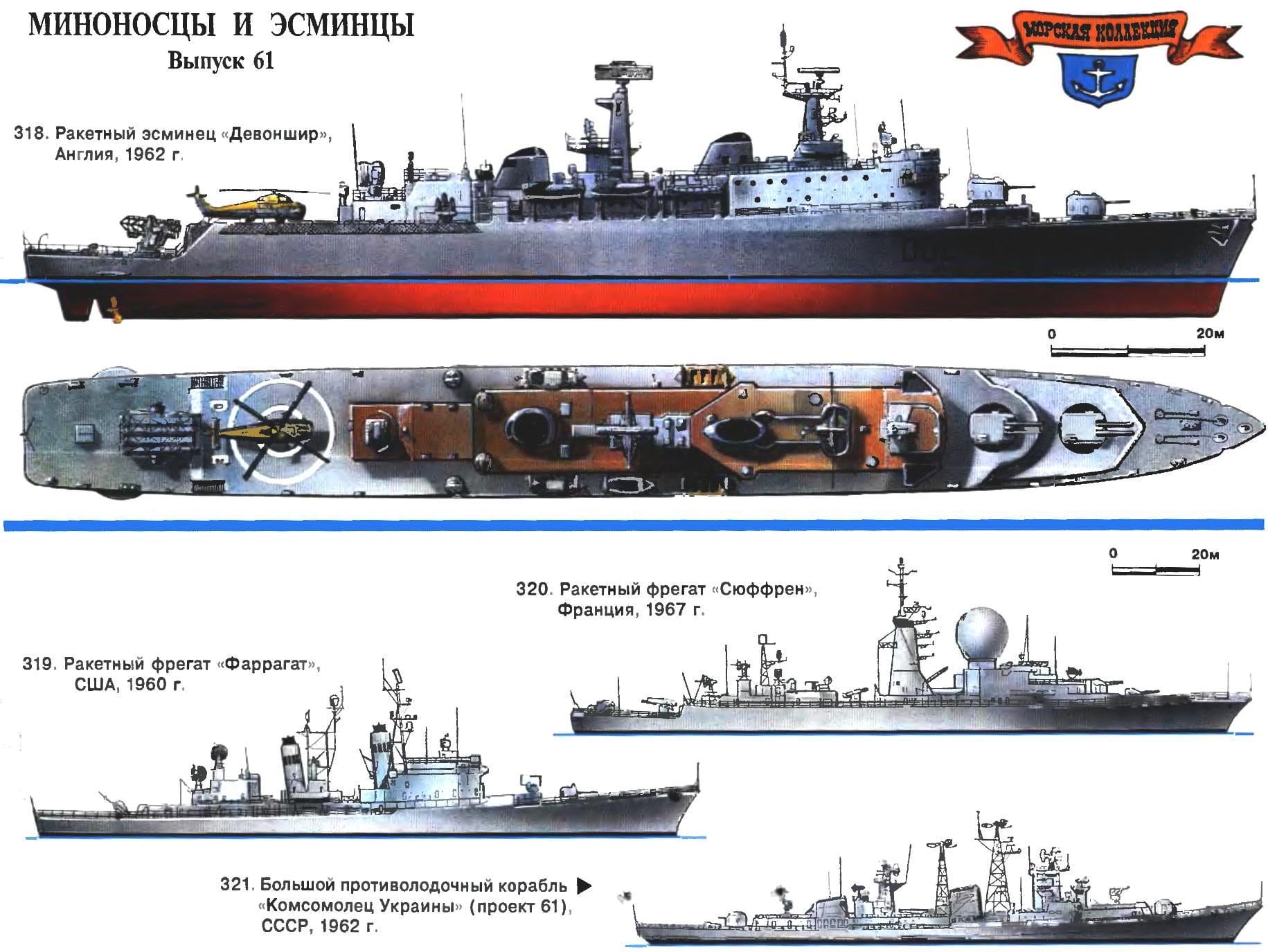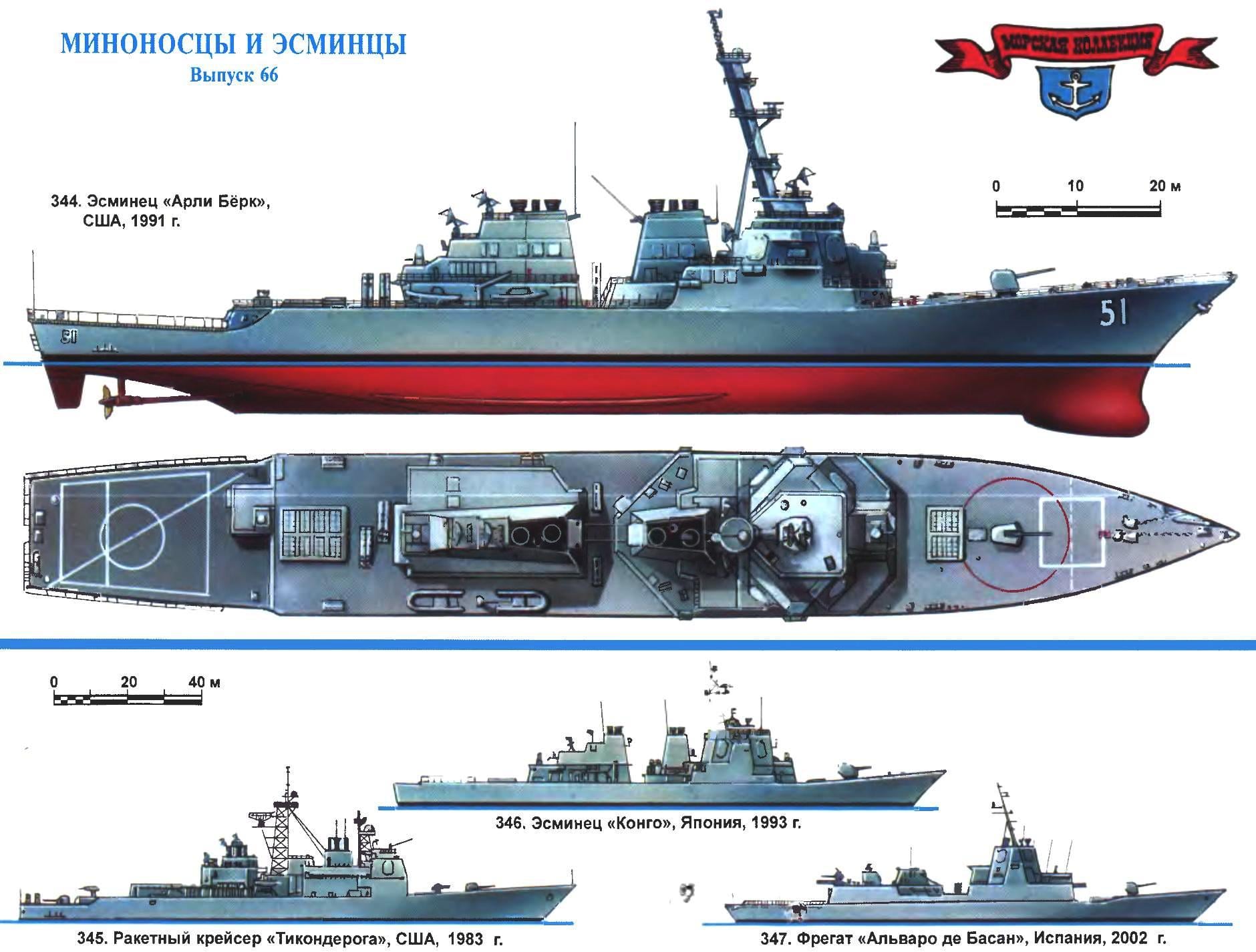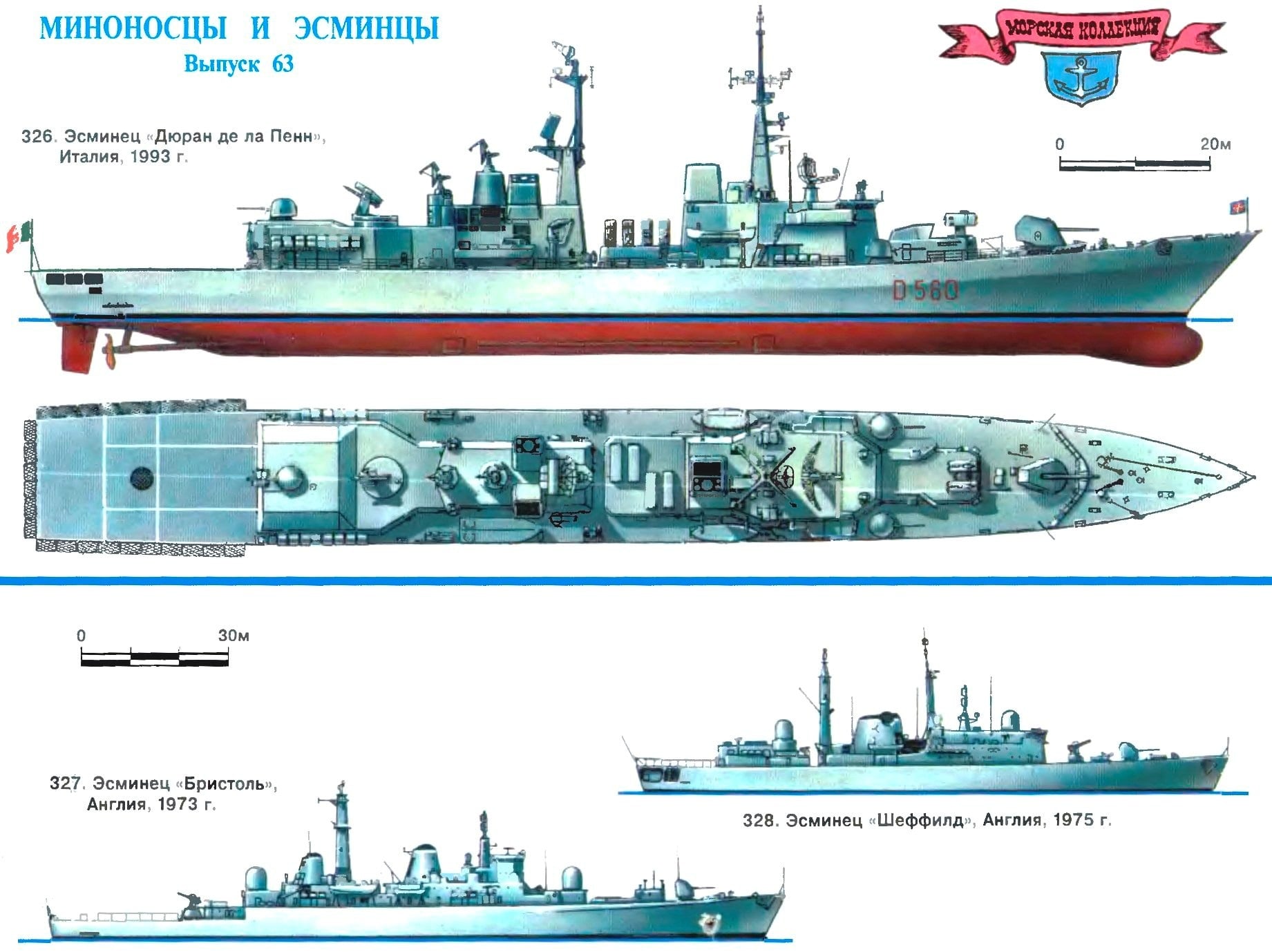 In countries which are called “Maritime powers of the second tier”, you can see two diametrically opposite approaches to creation of own torpedo ships. Some tried to build world’s most powerful superessence remaining, as a rule, in a single instance; one of them belonged to Yugoslavia and Poland (about which we told in the previous issue of the journal). Other countries, on the contrary, gave preference to low-cost destroyers with modest combat capabilities, but that it was possible to build a small but still lots.
In countries which are called “Maritime powers of the second tier”, you can see two diametrically opposite approaches to creation of own torpedo ships. Some tried to build world’s most powerful superessence remaining, as a rule, in a single instance; one of them belonged to Yugoslavia and Poland (about which we told in the previous issue of the journal). Other countries, on the contrary, gave preference to low-cost destroyers with modest combat capabilities, but that it was possible to build a small but still lots.
Marine
HEROES AND ANTI-HEROES OF THE MEDITERRANEAN
 If the aerial part of the German operation for the invasion of Crete in may 1940, no doubt, was an outstanding achievement and entered the history of the art of war, its Maritime component looked just pathetic. The so-called “First light convoy”, intended to capture the airfield at Maleme, consisted of two dozen commandeered the Greeks of motor boats and small coasting boats to the full loaded troops, weapons and ammunition. The only warship, which was assigned to protect the caravan from the enemy fleet, was a small Italian torpedo boat “Lupo” commanded by captain 2 rank, Francesco Mimbelli.
If the aerial part of the German operation for the invasion of Crete in may 1940, no doubt, was an outstanding achievement and entered the history of the art of war, its Maritime component looked just pathetic. The so-called “First light convoy”, intended to capture the airfield at Maleme, consisted of two dozen commandeered the Greeks of motor boats and small coasting boats to the full loaded troops, weapons and ammunition. The only warship, which was assigned to protect the caravan from the enemy fleet, was a small Italian torpedo boat “Lupo” commanded by captain 2 rank, Francesco Mimbelli.
TRADITIONS AND INNOVATIONS
 The end of the Second world war and the beginning of the war “cold” put shipbuilders leading countries of the world in a very difficult situation. What will be the fleet of the near future? A plausible answer to this question. On the one hand, the naval theorists and engineers have gained an extensive experience of fighting the sea, which, it would seem that rightly could be considered the criterion of truth. On the other hand, progress in military technology has been so rapid that to follow him is not always possible. Electronics, jet aircraft, guided missiles, nuclear weapons—all these innovations have required reflection, and the most reasonable solution here would be not to rush and to “pause”. However, to do so would have taken the United States by the end of 1945 they had a huge fleet and was considered to be the undisputed world leader. Other countries, especially those whose Navy suffered heavy losses, could not wait and started to build new ships immediately. The result of this venture was quite natural: the first post-war destroyers, developed on the basis of previous projects, at the time of entry into service turned out to be obsolete and unfit for combat missions in a new environment.
The end of the Second world war and the beginning of the war “cold” put shipbuilders leading countries of the world in a very difficult situation. What will be the fleet of the near future? A plausible answer to this question. On the one hand, the naval theorists and engineers have gained an extensive experience of fighting the sea, which, it would seem that rightly could be considered the criterion of truth. On the other hand, progress in military technology has been so rapid that to follow him is not always possible. Electronics, jet aircraft, guided missiles, nuclear weapons—all these innovations have required reflection, and the most reasonable solution here would be not to rush and to “pause”. However, to do so would have taken the United States by the end of 1945 they had a huge fleet and was considered to be the undisputed world leader. Other countries, especially those whose Navy suffered heavy losses, could not wait and started to build new ships immediately. The result of this venture was quite natural: the first post-war destroyers, developed on the basis of previous projects, at the time of entry into service turned out to be obsolete and unfit for combat missions in a new environment.
ESCORT DESTROYERS
 Inevitably looming at the end of the 30-ies of the threat of war forced the British Admiralty to take all possible measures to strengthen the fleet, and to do this required quickly and at minimal cost. If the ensuring action of the fighting force of the fleet one way or another was solved through the construction of various types of destroyers, as we told you in previous issues, the issue of the protection of navigation in the waters surrounding Britain and her possessions, looked much sharper. Three dozen sloops, mostly obsolete, slow moving, not able to ward off even the plane-“whatnot” — that could oppose the “mistress of the seas” potential enemy for tens of thousands of miles coastal strip of the Empire, which yet “never the sun went down”.
Inevitably looming at the end of the 30-ies of the threat of war forced the British Admiralty to take all possible measures to strengthen the fleet, and to do this required quickly and at minimal cost. If the ensuring action of the fighting force of the fleet one way or another was solved through the construction of various types of destroyers, as we told you in previous issues, the issue of the protection of navigation in the waters surrounding Britain and her possessions, looked much sharper. Three dozen sloops, mostly obsolete, slow moving, not able to ward off even the plane-“whatnot” — that could oppose the “mistress of the seas” potential enemy for tens of thousands of miles coastal strip of the Empire, which yet “never the sun went down”.
“OVERTAKE, NOT CATCHING”
 Composed at the end of the Second world war on Stalin’s personal order long-term plan of development of the Navy (see “modelist-Konstruktor” No. 6 in 2002) were struck by its size. It is now clear that at that time in our country, which is emerging from a difficult period of its history, was hardly the strength to carry out such an ambitious plan in full. But, most importantly, the point of this expensive program was a bit, because the main rival in the struggle for world domination, the United States already had a huge fleet to catch up, which quantitatively is not possible. The most far-sighted political and military leaders of our country understood that it is necessary to find a principally new solution that would compete with America on the oceans.
Composed at the end of the Second world war on Stalin’s personal order long-term plan of development of the Navy (see “modelist-Konstruktor” No. 6 in 2002) were struck by its size. It is now clear that at that time in our country, which is emerging from a difficult period of its history, was hardly the strength to carry out such an ambitious plan in full. But, most importantly, the point of this expensive program was a bit, because the main rival in the struggle for world domination, the United States already had a huge fleet to catch up, which quantitatively is not possible. The most far-sighted political and military leaders of our country understood that it is necessary to find a principally new solution that would compete with America on the oceans.
OCEAN ESCORT
 In 1950-e years the Navy has a new enemy — jet aircraft. High speed and powerful weapons of new generation aircraft need to increase the range of their interception. But the first attempt to implement destroyers anti-aircraft missile systems, medium range as we already know have failed (see “modelist-Konstruktor” No. 9 for 2002). A two-stage Terrier with difficulty placed on the rebuilt “Hayate”, demanded too much space. Of course, the Americans could abandon its use, focusing on lighter single-stage “Tartarus”, but the desire to cover their carriers are far anti-aircraft “umbrella” gave rise to another solution. Times little space, so it is necessary to build larger ships! So there is a new subclass of destroyers, received in the USA the designation “missile frigates”, or “missile, the leaders of the destroyers” (DLG — Destroyer Leader, Guided Missile).
In 1950-e years the Navy has a new enemy — jet aircraft. High speed and powerful weapons of new generation aircraft need to increase the range of their interception. But the first attempt to implement destroyers anti-aircraft missile systems, medium range as we already know have failed (see “modelist-Konstruktor” No. 9 for 2002). A two-stage Terrier with difficulty placed on the rebuilt “Hayate”, demanded too much space. Of course, the Americans could abandon its use, focusing on lighter single-stage “Tartarus”, but the desire to cover their carriers are far anti-aircraft “umbrella” gave rise to another solution. Times little space, so it is necessary to build larger ships! So there is a new subclass of destroyers, received in the USA the designation “missile frigates”, or “missile, the leaders of the destroyers” (DLG — Destroyer Leader, Guided Missile).
DESTROYERS OF THE XXI CENTURY
 In the early 1980s, the years of the cold war at sea has reached its climax. The unprecedented growth of the Soviet Navy — qualitative — inspired West well-founded fear. The USSR not without success, aspherical American goodsto in the oceans— only in 1981-1983 and the sea came holoeye ships from four new series: missile cruiser “Kirov” and “Glory”, the destroyer “Modern” MIC “Swashbuckling”… the Soviet anti-ship missiles at soem characteristics — range, speed, power, warheads, far ahead of the best Western samples. Never a history of Russian fleet was not as Arnim tool miraaj policy, and as the time, separated from us by two decades. Largely it was the merit of Admiral S. G. Gorskaya, nearly 30 years held the post glaucoma of the Navy. He was able to convince party leadership of the USSR that without a powerful Navy ornago our country will not be able to compete with the United States and will Aetna doomed to the “subordinate” position.
In the early 1980s, the years of the cold war at sea has reached its climax. The unprecedented growth of the Soviet Navy — qualitative — inspired West well-founded fear. The USSR not without success, aspherical American goodsto in the oceans— only in 1981-1983 and the sea came holoeye ships from four new series: missile cruiser “Kirov” and “Glory”, the destroyer “Modern” MIC “Swashbuckling”… the Soviet anti-ship missiles at soem characteristics — range, speed, power, warheads, far ahead of the best Western samples. Never a history of Russian fleet was not as Arnim tool miraaj policy, and as the time, separated from us by two decades. Largely it was the merit of Admiral S. G. Gorskaya, nearly 30 years held the post glaucoma of the Navy. He was able to convince party leadership of the USSR that without a powerful Navy ornago our country will not be able to compete with the United States and will Aetna doomed to the “subordinate” position.
THE MISSILE REPLACES THE TORPEDO
 Six years of the Second world war has clearly shown how dangerous the enemy fleet became the aircraft. Even such innovations as radar control anti-aircraft fire and radar fuzes, are unable to fully protect allied ships from the Japanese kamikaze and the German glide bombs. Required tool, capable of hitting aerial target with the first volley at max range. Artillery to cope with this problem could not, therefore, immediately after the war, the U.S. Navy adopted the program of development of antiaircraft guided missiles. The work was carried out on a broad front. At the same time developed systems of three types: long (up to 120 km) steps — “Teylos”, medium (20— 35 km) — the “Terrier”, and is relatively small (approximately 17 km) — the “Tartar”.
Six years of the Second world war has clearly shown how dangerous the enemy fleet became the aircraft. Even such innovations as radar control anti-aircraft fire and radar fuzes, are unable to fully protect allied ships from the Japanese kamikaze and the German glide bombs. Required tool, capable of hitting aerial target with the first volley at max range. Artillery to cope with this problem could not, therefore, immediately after the war, the U.S. Navy adopted the program of development of antiaircraft guided missiles. The work was carried out on a broad front. At the same time developed systems of three types: long (up to 120 km) steps — “Teylos”, medium (20— 35 km) — the “Terrier”, and is relatively small (approximately 17 km) — the “Tartar”.
MISSILE-ROUNDERS
 Released by Argentine aircraft missile destroyer “Sheffield” notice when nothing could be done. After a few seconds the ship shook from a strong blow. Getting had to the area of the engine room, and although the missile “Exocet” exploded, from the working engine broke spilled from a broken pipeline fuel. The fire quickly spread to the adjacent premises; widely used in the construction of destroyer, the aluminum began to melt and burn. Five hours later the crew had to leave flame-wreathed ship. Rescue work continued for another five days, but due to the bad weather and heavy swells they were not successful. In the end, “Sheffield” sank. So on may 10, 1982, an account was opened losses Royal Navy during the Anglo-Argentine conflict over the Falkland Islands (Malvinas).
Released by Argentine aircraft missile destroyer “Sheffield” notice when nothing could be done. After a few seconds the ship shook from a strong blow. Getting had to the area of the engine room, and although the missile “Exocet” exploded, from the working engine broke spilled from a broken pipeline fuel. The fire quickly spread to the adjacent premises; widely used in the construction of destroyer, the aluminum began to melt and burn. Five hours later the crew had to leave flame-wreathed ship. Rescue work continued for another five days, but due to the bad weather and heavy swells they were not successful. In the end, “Sheffield” sank. So on may 10, 1982, an account was opened losses Royal Navy during the Anglo-Argentine conflict over the Falkland Islands (Malvinas).
THE SHIPS OF THE EAST “DRAGONS”
 Early 80-ies of XX century coincided with major changes in the geopolitical situation in the world, especially in the far East. Such “invisible” in the past, countries like South Korea, Taiwan, Singapore, Thailand, experienced rapid economic growth, which in the West they were generally known as “young dragons”. That’s an affectionate nickname clearly testified that the traditional “dragon” region — Japan and China — there are worthy competitors.
Early 80-ies of XX century coincided with major changes in the geopolitical situation in the world, especially in the far East. Such “invisible” in the past, countries like South Korea, Taiwan, Singapore, Thailand, experienced rapid economic growth, which in the West they were generally known as “young dragons”. That’s an affectionate nickname clearly testified that the traditional “dragon” region — Japan and China — there are worthy competitors.
